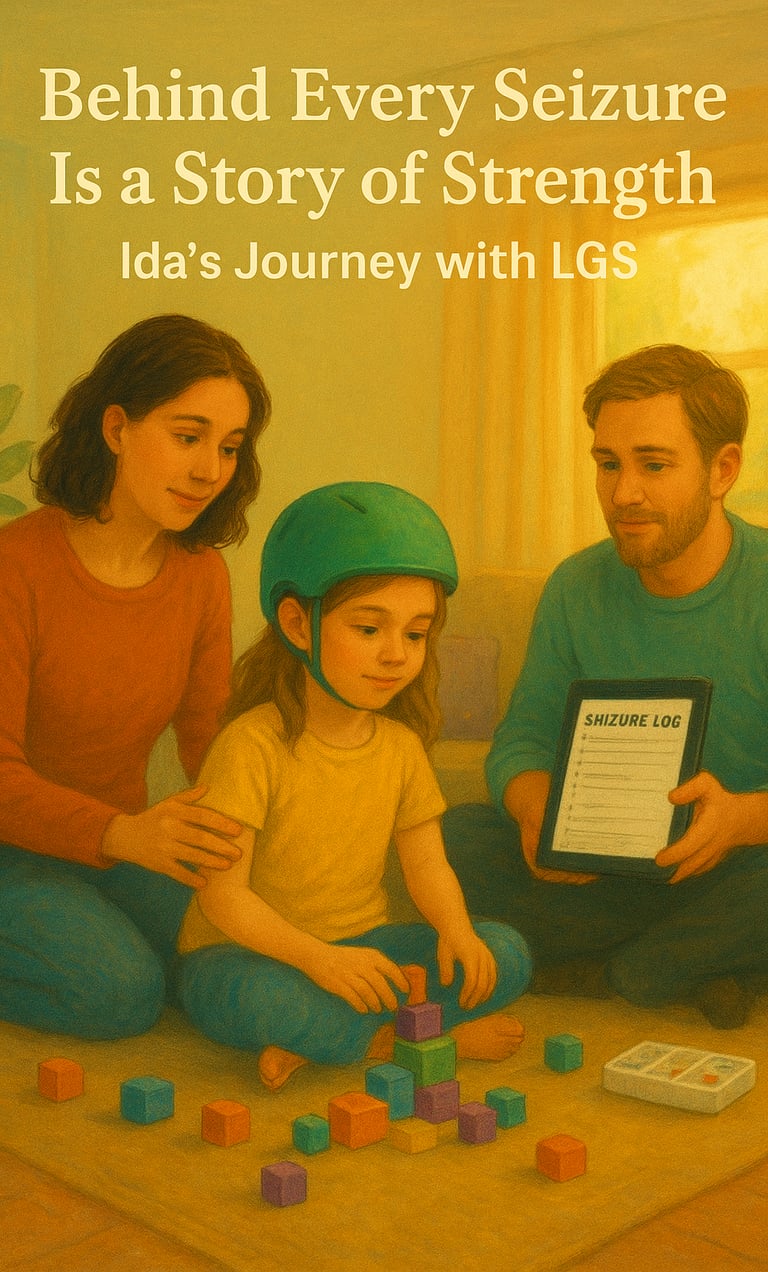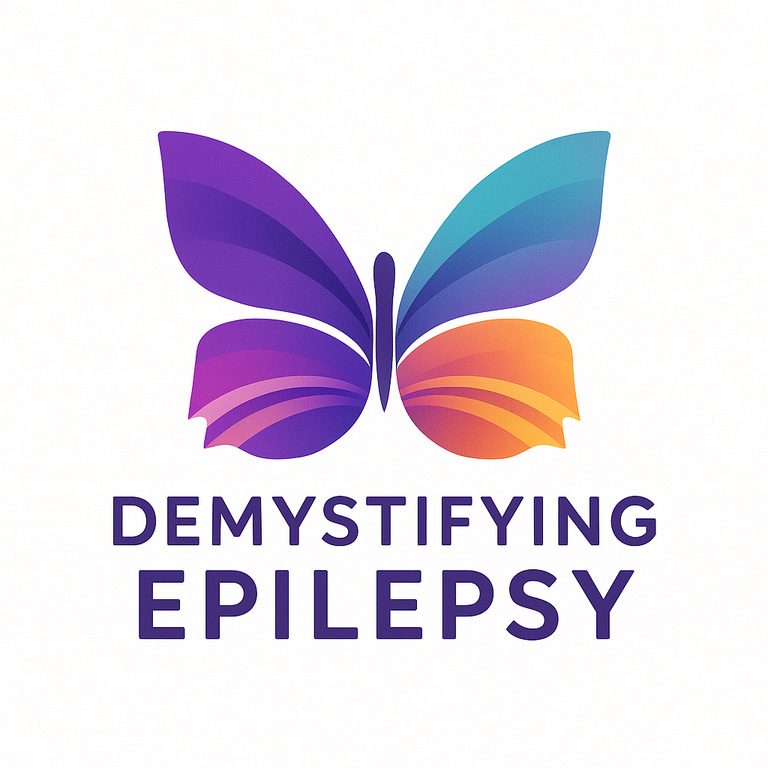Understanding Lennox Gastaut syndrome (LGS): Hope, Reality, and One Girl’s Journey
Caring for a child with Lennox-Gastaut Syndrome (LGS) can feel overwhelming — but you are not alone. This post breaks down what every parent should know about LGS in 2025, from the latest medical treatments to everyday support strategies. Learn how to build a strong care team, manage complex seizures, support your child’s development, and protect your family’s emotional well-being. We’ve also included a Parent-Friendly LGS Checklist a simple, practical tool to help you stay organized, track care, and feel more confident navigating your child’s journey. 💡 Whether you’re newly diagnosed or years into this journey, this guide offers clarity, encouragement, and the most current insights from trusted medical and advocacy sources.
Dr. Clotilda Chinyanya
11/16/20256 min read


When you hear the words Lennox-Gastaut syndrome (LGS), it’s natural to feel a mix of uncertainty, fear and perhaps even defeat. It’s a rare, severe epilepsy syndrome that presents numerous challenges for the child, the family, and the medical team. But understanding the condition, its pathways, the possibilities, and sharing real human stories can help turn that fear into something more manageable, a roadmap of care, connection, and hope.
What is LGS?
LGS is a form of developmental and epileptic encephalopathy, meaning that the seizures themselves and the underlying brain dysfunction impact development, cognition and behavior. (ovid.com)
Here are the core features:
Multiple seizure types, often beginning in early childhood (age ~ 18 months to 8 years, peak between 3–5 years). (ninds.nih.gov)
Common seizure types: tonic seizures (stiffening), atonic or “drop attacks” (sudden loss of muscle tone) which lead to falls, atypical absence seizures (staring spells), myoclonic seizures (sudden jerks) and generalized tonic-clonic seizures. (ninds.nih.gov)
These seizure types often are drug-resistant; they don’t respond well to a single anti-seizure medication. (ovid.com)
Characteristic EEG (electroencephalogram) patterns:
A diffuse slow spike-wave pattern (often < 3 Hz) during wakefulness. (Cambridge University Press & Assessment)
Generalized paroxysmal fast activity (GPFA) during sleep. (PubMed)
These findings reflect widespread, bilateral brain network dysfunction, rather than a single focal area. (ovid.com)
Cognitive, behavioral and developmental impairments:
Many children already have developmental delays, or they emerge around the time LGS begins. Over time, more than 90 % of cases will have moderate to severe intellectual impairment. (Cambridge University Press & Assessment)
Behavioral issues are common: hyperactivity, aggression, sleep disorders, communication difficulties. (ninds.nih.gov)
Underlying causes / etiology:
LGS often arises after another epilepsy syndrome (for example West syndrome/infantile spasms) or from a structural brain abnormality, metabolic or genetic cause. (Cambridge University Press & Assessment)
In about 30 – 35 % of cases, no clear cause is identified. (ninds.nih.gov)
Genetic causes are increasingly recognized (de novo pathogenic variants, copy-number variants) though often without family history. (ovid.com)
Prognosis and persistence:
LGS is rarely “outgrown.” Most children continue to have seizures into adolescence and adulthood. (Cambridge University Press & Assessment)
Complete seizure freedom is very uncommon. Functional outcomes vary, but many face lifelong challenges. (ninds.nih.gov)
Why does LGS occur? A deeper look
LGS is not a single disease; it’s a syndrome, a collection of symptoms, brain-network abnormalities, and outcomes. What unites those different causes is the disruption of broad brain networks (both cortical and subcortical) during a critical developmental window, which then predisposes the brain to the “multiple seizure types and cognitive impairment” pattern. (ovid.com)
For example:
A child who suffered hypoxic-ischemic injury at birth may have diffuse brain damage;
Or a child with a cortical malformation (brain developmental defect) may have structural wiring that leads to epileptic networks;
Or genetic mutation may alter inhibition/excitation balance in many brain areas rather than one focus.
In all these, the brain becomes vulnerable to generating the erratic, synchronized activity seen in LGS (slow-spike waves, GPFA). A systematic review of EEG studies confirms the presence of slow spike-wave in >90 % of cases. (PubMed)
Meet Ida - A Story of One Child’s Journey
When Ida was born, her parents rejoiced: a healthy baby girl, full of promise. She hit her early milestones, sat up at six months, started babbling around 9 months. At age 2, however, the first hint came: a sudden stiffening of her body and upward gaze that lasted only seconds, a tonic seizure. The neurologist said maybe an atypical absence.
Over the next year, things changed. The seizures evolved: some moments of blank stare, other times sudden head drops or body limpness (drop attacks) that terrified her parents as she slumped forward onto her toys or fell during play. Then, longer generalized tonic-clonic seizures. Her language slowed; she no longer babbled as much, walked more tentatively. An EEG showed the classic slow spike-wave, and MRI revealed a subtle cortical malformation on one side. At age 4, she was diagnosed with LGS.
What did this mean for Ida and her family?
Early fear: For her parents the drop seizures were the scariest. They heard the thud, dashed to pick her up, always worried about head injury.
Medication cascade: She started on valproate (a broad-spectrum anti-seizure drug), then clobazam, then topiramate. The seizures reduced a little, sometimes 50 % fewer, but they still came.
Therapies added: She was referred to physical therapy (for gross motor delays), speech therapy, and occupational therapy. Her school joined early-intervention services.
Lifestyle and safety: Her parents padded the playroom, removed sharp edges, rated helmets for her drop seizures, and built seizure-safety into their home.
Emotional journey: There were moments of hope when a medication seemed to help, and moments of despair when a cluster of seizures reset the progress. Her parents sought support groups, connected with other LGS families, and learned not just about seizures but about cognition, behavior, sleep, and quality of life.
Looking ahead: At age 8, Ida still had seizures, but fewer drop attacks with the addition of the ketogenic diet (after discussion with her neurologist). She still struggled with learning and needed a modified curriculum, but she laughed, enjoyed music, had friends, loved to paint. Her future wasn’t perfect, but it was full of possibility.
Ida’s story is just one of many. It illustrates the complexity of LGS: multiple seizure types, drug-resistance, developmental and cognitive impact, but also the resilience of a child and family working together with a care team to build a life.
How is LGS diagnosed?
Diagnosis typically involves:
Clinical history: multiple seizure types, often including tonic, drop (atonic) seizures, myoclonic or absence seizures. (ninds.nih.gov)
EEG: demonstration of slow spike-wave complexes (< 3 Hz) and/or generalized paroxysmal fast activity, often in sleep. (PubMed)
Neuroimaging (MRI): to identify structural causes like cortical malformations, brain injury, tuberous sclerosis. (ninds.nih.gov)
Development/cognitive assessment: many children already show developmental delays, changes in cognition or behavior. (Cambridge University Press & Assessment)
Because the full diagnostic tools may not be present immediately, children with drug-resistant seizures and developmental issues require follow-up and consideration of LGS as the pattern evolves. (iris.uniroma1.it)
Treatment approaches & challenges
Treating LGS is challenging. There is no single cure, and seizure freedom is rare. The goal is often to reduce seizure burden, minimize injury (especially from drop seizures), optimize cognition/behavior, and enhance quality of life.
Anti-seizure medications (ASMs)
Many children require polytherapy (multiple drugs) because monotherapy often fails. (ovid.com)
Even with “effective” drugs, many children continue to have seizures and maintain risk of status epilepticus (prolonged seizures) or drop attacks.
Non-medication options
Dietary therapies: The ketogenic diet, modified Atkins diet, and low-glycemic index treatment can reduce seizures. These are especially considered when medications alone are not sufficient. (ninds.nih.gov)
Devices: For example, Vagus nerve stimulator (VNS) can be an adjunctive therapy. A scoping review found seizure-reduction responder rates (≥50 % reduction) ranged widely, with median reductions around 20-65%. (MDPI)
Surgery: While not always feasible, surgical options such as Corpus Callosotomy (severing the connection between cerebral hemispheres) have been used for drop attacks, and some resective surgeries in select cases. A meta-analysis showed better outcomes with greater extent of callosotomy, though risks must be weighed. (Northwestern Scholars)
Managing non-seizure aspects
Seizures are only part of the story. Cognitive decline, behaviour issues, sleep disruption, and quality-of-life impacts for both the child and caregivers are significant. A systematic review of illness burden noted that LGS is associated with high direct health-care costs, significant caregiver burden, and yet many non-seizure symptoms remain undertreated. (ovid.com)
Practical guidance: What families and caregivers can do
If you are caring for a child with LGS (or suspect it), here are some practical steps:
Work with a specialized epilepsy team (epileptologist, neurologist, dietician, neuropsychologist) early.
Ensure safety modifications at home: helmets for drop attacks, padded play areas, seizure-first-aid plan.
Maintain clear seizure diaries (types, times, triggers) to help guide treatment adjustments.
Ask about comprehensive cognitive/behavioral assessment, therapy for speech, occupational, physical and behavior can be critical.
Consider non-seizure supports like, sleep hygiene (since sleep disruptions worsen seizures), behavioral supports, communication aids.
Explore diet, device or surgical options early if medications insufficient: they are often more effective when introduced sooner.
Connect with other families or support groups because the emotional burden is heavy, and peer support helps.
Plan for long term: as children with LGS grow, transitioning into adult care, vocational supports, respite care and family-planning issues become important.
Outlook and things to remember
While the prognosis for LGS is serious, seizure freedom is uncommon and cognitive/behavioral impairments are frequent, it is NOT a hopeless diagnosis. The child with LGS can still have meaningful, rich life experiences: friendships, learning adapted to ability, joys and milestones in their own way. In our story of Ida: yes, she still has seizures, but she paints, smiles, has friends, and her family rallies around her potential.
New research and treatment avenues provide glimmers of hope:
Advances in genetic testing are helping identify underlying causes and may guide more precise therapies. (ovid.com)
Ongoing improvements in device therapy, diet management, surgical techniques and support for non-seizure symptoms (cognition, sleep, behavior) are evolving.
More awareness of the “whole child” focusing on seizures and development, cognition, behavior, and quality of life, is improving comprehensive care.
Final thoughts
LGS forces families to navigate complexity: seizure after seizure, therapy after therapy, developmental support after support. But the key is not to let the syndrome define the child’s entire being. Just like Ida, each child is first a child: someone who laughs, plays, learns (in their own way), dreams.
If you are reading this and feeling the weight of LGS for your child, for a friend, for yourself, know you are not alone. There is a community, there are specialists, there are resources. There is potential. And while the journey may look different than the one you originally imagined, it can still be one filled with love, meaning, connection and hope.
For parents and caregivers, feel free to download this Parent-Friendly Lennox-Gastaut Syndrome (LGS) Checklist
Be Informed:
